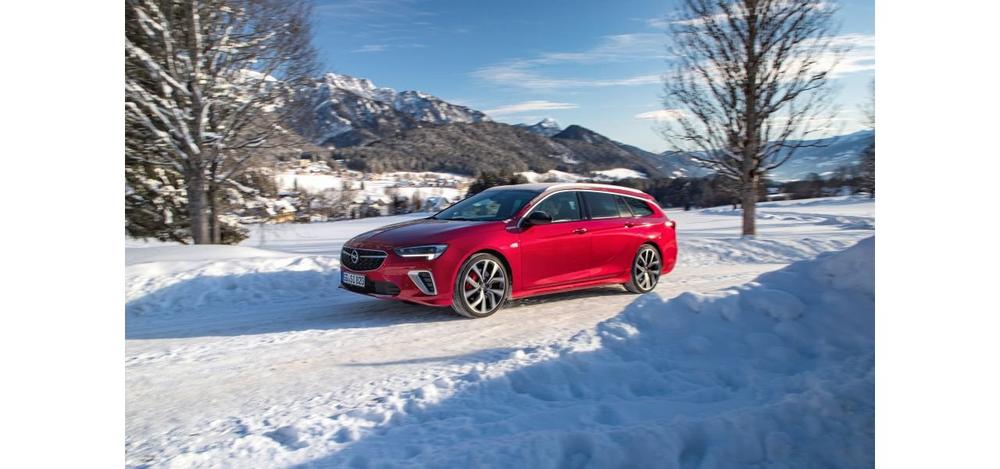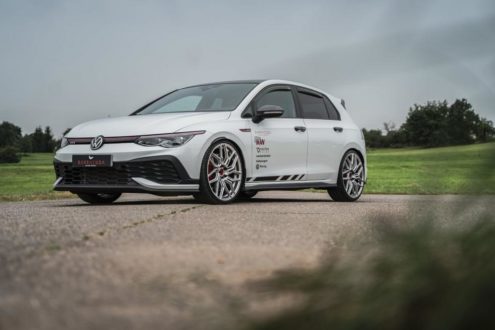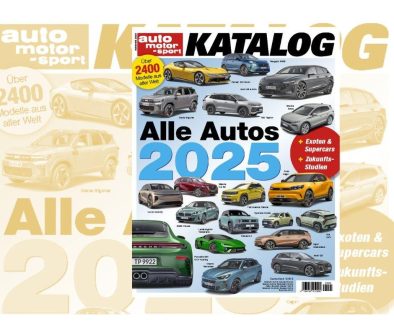
Typically Opel: Cosy Comfort in Winter
- Good for the back: Heated AGR seats with massage function
- Nice and warm: QuickHeat system and heated steering wheel
- Comfort for the second row: Heating for rear seats and footwell
- Ready for take-off: ThermaTec heated windscreen for clear vision
- Supplementary heating: Grandland and Astra hybrids, and electric vehicles with heat pump and pre-conditioning
The cold season is coming. That means clearing the windows of ice and bringing the interior up to temperature before the morning start. No problem for Opel drivers. Because the passenger cars from the flagship Insignia to the new Astra, Grandland and Crossland to the electric cars Mokka-e, Corsa-e, Combo-e Life and Zafira-e Life become sources of cosy warmth in winter. Numerous technologies and equipment options help to ensure that the cars welcome drivers and passengers with pleasant temperatures right from the start. The cold simply stays outside. The ergonomic active seats with AGR seal of approval, which can be adjusted and heated in many ways, as well as the steering wheel and footwell heating ensure a relaxed and safe journey at all times. Depending on the model, the heated windscreen ensures a clear view even in frosty conditions, and the heat pump in battery-electric Opel cars supports a particularly efficient heat supply. In addition, the electric cars can also be pre-heated conveniently via the myOpel app.
AGR seal: Class leading seats with massage, heating and ventilation
The seats are crucial for a comfortable and relaxed journey. They form the link between person and vehicle. Accordingly, Opel has always placed a focus on seat development – with the result that best-in-class seats with an AGR rating are a tradition at Opel and are available in many models and versions. For example, the ergonomic seats developed in-house and certified by the “Aktion Gesunder Rücken e.V.” AGR seats not only make long-distance driving a pleasure in the Opel flagships Insignia and Grandland as well as in the Crossland, but also in the new Astra. The various adjustment options from length, height, tilt, thigh support and seat bolsters to the electro-pneumatic lumbar support ensure a healthy posture for every stature. In the new Astra, the front seats have been positioned 12 millimetres lower than in the predecessor, which enhances the sporty driving experience. The driver and front passenger can optionally sit on firmer “Sport” or slightly softer “Comfort” seats. The front seats and the outer rear seats can also be heated (depending on variant). In the Nappa leather version, the driver’s seat also has a ventilation and massage function.
The ultimate in sportiness and ergonomics is the GSi performance sport seat for the Insignia GSi (fuel consumption Opel Insignia GSi with 2.0 Direct Injection Turbo and 169 kW/230 hp according to WLTP1: combined 8.8-7.9 l/100 km, 200-179 g/km CO2). The AGR-tested integral seat combines excellent lateral support with the best comfort features from the Insignia. It has ventilation multi-stage heating, a massage function (driver’s seat) and adjustable side bolsters. In the sportiest Insignia, there is also the raised backrest with integrated headrest. The seat can be electrically adjusted in the longitudinal direction, height, cushion angle and backrest angle. The air cushions of the four-way lumbar support and the variable side bolsters are also electrically activated. The performance seat is unique in its combination of sporty lateral support and comfortable features – developed by Opel’s experts for healthy sitting.
At Opel, however, good seating is not a question of vehicle class. Even in models such as the Corsa and Mokka, as well as the Zafira Life MPV, occupants can sit back and relax. Here, too, multi-adjustable comfort seats with lumbar support and massage function for the driver, as well as heated seats for the driver and front passenger, enhance the feel-good atmosphere from the moment they get in to the moment they get out. Rear-seat passengers in the Opel Corsa, Mokka and Crossland can also enjoy the standard footwell heating system that helps them forget about cold outside temperatures.
Everything under control: Heating systems for comfort and safety
The heated comfort and ergonomic active seats are a feel-good, health and safety feature all in one. They not only ensure that the driver and passengers can sit comfortably in a position that is easy on the back; thanks to the seat heating, the winter jacket can be taken off even before the journey begins. This means that no thick clothing restricts freedom of movement and the seat belt can be fitted snugly to the body without any slack – this is the only way it can develop its full protective effect in the event of a collision. Safety is also enhanced by the heated steering wheel, which warms the fingers in just a few seconds.
Equally helpful are anti-frost systems such as the heated ThermaTec windscreen in the Opel Insignia or the new Astra, Grandland and Crossland. At the touch of a button, the inconspicuous heating wires in the windscreen are activated to ensure a clear view. With this feature, the tendency to mist up in damp and cold weather is a thing of the past. Heated exterior mirrors also provide a clear view to the rear.
Depending on the Opel model, the optional Quickheat electric quick-heating system also helps to warm up the interior and thus the windows quickly. In just a few seconds, pleasantly warm air flows into the car’s interior.
Via app and heat pump: Efficient pre-conditioning of Opel electric vehicles
Opel’s electric models are the right choice for those who want to climb straight into a comfortably preheated car and drive off in winter. Owners of electric cars such as the Corsa-e or Mokka-e can use the myOpel app to programme the pre-heating of the interior from the comfort of their couch. Within a few minutes, the car cabin not only reaches a comfortable temperature, but the windows are also ice-free in frosty conditions.
At the same time, efficient energy management of battery-electric vehicles is necessary, especially in winter, to keep energy consumption low and the range high. To do this, simply switch on the pre-temperature control while the car is connected to the external power supply via a household socket, a wallbox or a fast charger – then the energy required for heating comes from the external power supply and the full electric range is available at the start. Thanks to the heat pump fitted as standard in the Corsa-e and Mokka-e, the waste and lost heat generated can be used to heat the interior without having to switch on a conventional heating, which would compromise range.
[1] The fuel consumption and CO2 emissions figures mentioned comply with the WLTP homologation (regulation EU 2017/948). From 1 September 2018, new vehicles are type-approved using the World Harmonised Light Vehicle Test Procedure (WLTP), which is a new, more realistic test procedure for measuring fuel consumption and CO2 emissions. The WLTP fully replaces the New European Drive Cycle (NEDC), which was the test procedure used previously. Due to more realistic test conditions, the fuel consumption and CO2 emissions measured under the WLTP are in many cases higher compared to those measured under the NEDC. The fuel consumption and CO2 emissions figures may vary depending on specific equipment, options and format of tires.
Opel Automobile GmbH
Bahnhofsplatz
65423 Rüsselsheim
Telefon: +49 (6142) 7-70
Telefax: +49 (6142) 77-8409
http://de-media.opel.com/de
Telefon: +49 (6142) 6921576
E-Mail: jan-philipp.kress@stellantis.com
Communications, Manager International Product
Telefon: +49 (6142) 69-22084
E-Mail: colin.yong@stellantis.com
![]()




